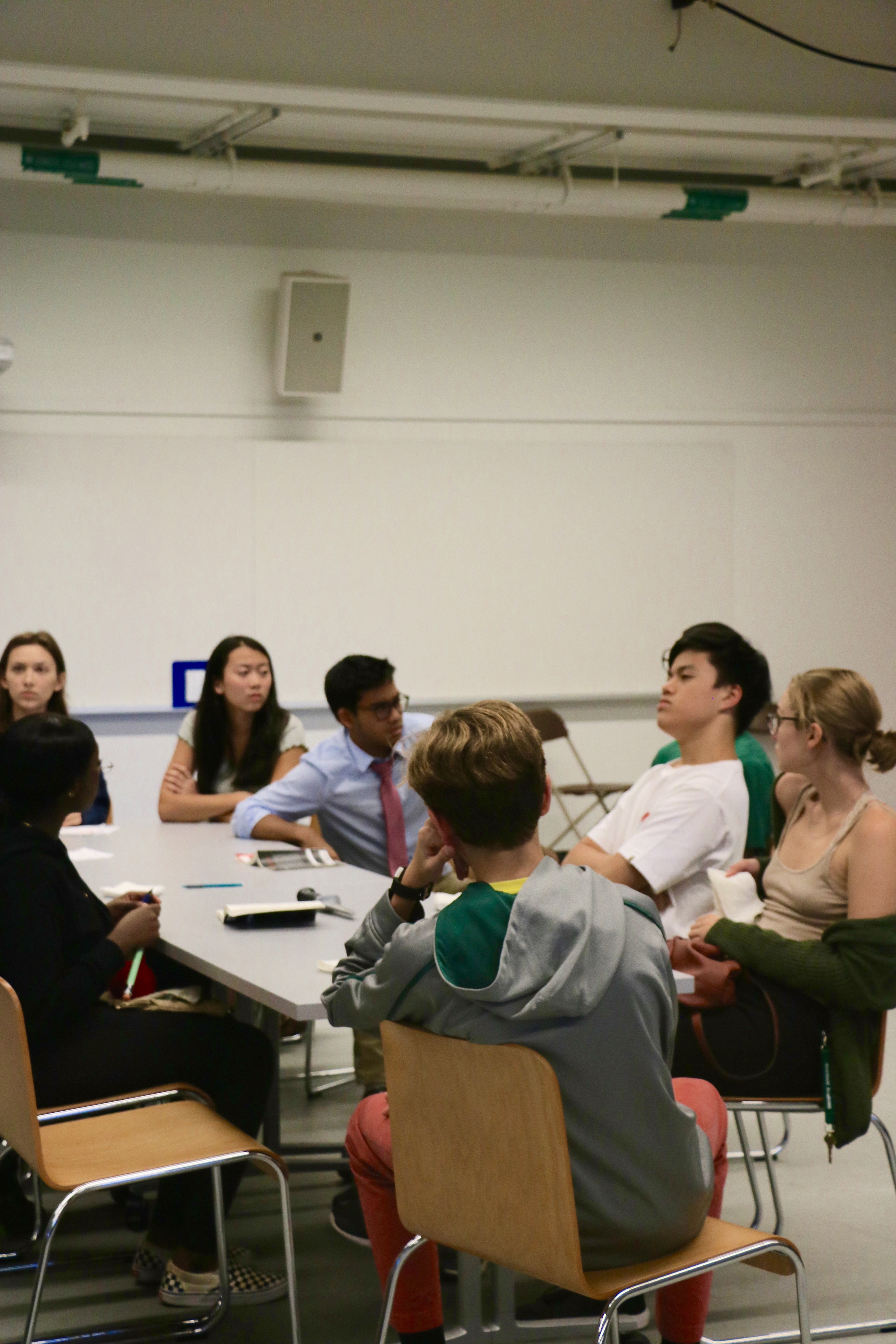On a dense summer day, a jury must decide the verdict of a young adult man who has allegedly murdered his father. Throughout the play, tensions thicken within the jury room. Written in 1954 by Reginald Rose, Twelve Angry Jurors takes place soon after the end of World War III. This period of time was not only characterized by economic prosperity, growing suburbs, and the baby boom, but also by civil rights movements and national suspicion due to the Cold War, which Rose’s play reflects through each characters’ personal differences and arguments.
“This play really puts emphasis on being afraid of people that are different from us. Since it is written in the 1950s, issues like immigration and racism are involved,” commented Micajah Stude ’19, who is playing Juror #8 in the play.
Even though this play takes place more than half a decade ago, many of the societal issues presented back then still remain relevant in present day. In addition to immigration and racism, the universal tendency for humans to suspect others always exists as a recurring problem for most groups.

“Throughout society, there’s always a sense of fear and distrust of people that are different than you, and uncertainty about people that don’t agree with you, which you definitely see throughout the play. People naturally gravitate to people who have the same opinions,” commented Angelique Alexos ’20, who plays Juror #1.
However, society has undeniably changed every since the 1950s, which poses the challenge of modifying the play to fit modern day understanding and values but not excessively meddling with its historical accuracy. The theater program cut a few sections of the play containing historical references from that time period, including mentions of companies, people, and even the Dempsey-Ferpi boxing fight, which many people nowadays may not understand or relate to.
Furthermore, the diversity of the cast itself has changed. “In the original cast, all twelve of the jurors were white men, but in our cast we have women, and we have people of more diverse ethnicities, which I think contributes to the conversation as far as cultural awareness goes,” noted Stude.
Hence, Ms. Hynds changed the original title of the play, Twelve Angry Men, to Twelve Angry Jurors in order to fully represent the cast members. For Alexos, playing a male character as a female character proved to be a struggle between past and modern views, and her character’s title of foreman was even changed to madam foreman.
“I really struggled with because the foreman is the leader of all the jurors and it was important to have a strong figure. But, at the same time, in the 1950s there weren’t really any women who were in those strong positions. Playing that character, I’m trying to find the balance between asserting authority but not trying to seem too modern and out of the time period,” said Alexos.
In preparation for the performance of the fall term theater production, the tech crew is working on a historically accurate rendition of a jury room, including one long table where the jurors will sit. During the first couple of weeks, the actors have studied the history of the play and run through their lines.
“Everybody has a little assignment that they have to research. So if there is any sort of historical reference or phrase that isn’t relevant anymore, Ms. Hynds will have it searched up,” elaborated Stude.
During the next weeks before showtime, the actors will focus more on details and addressing any issues. One of the greatest challenges of Twelve Angry Jurors is the pacing, especially because the play itself is more of a discussion than one with many movements.
“I’ve never been in a play that’s set in one environment the whole time, so it’s a challenge to keep the audience engaged and keep myself engaged,” observed Alexos.
However, the setting does not take away meaning behind movements during the play; in fact, blocking becomes more important as the audience’s eye is drawn to the smallest nuances.
“There’s surprisingly a lot of moving around even though they’re sitting at a table inside an enclosed space. Tensions are high in the room— people will go up and walk to the water cooler or pace around the room, and there are big monologues where everyone gets up and walks away. These movements that may seem in the moment have actually been all planned out and staged beforehand,” noted Alexa Brown ’19, who is the stage manager.
The minute details worked into the play only serve to emphasize the characters’ distinct differences and how they interact with each other because of these disagreements. The differences between them, and their reactions spurned by argument, bridge the gap of time between the 1950s and modern day to reflect many social aspects of society today.
“Ms. Hynds does a very important job of bringing people into the world around us through her plays because we do live in a little bubble at Deerfield … you might think about a line you heard in the play and connect that to something you read in the news,” concluded Stude.

